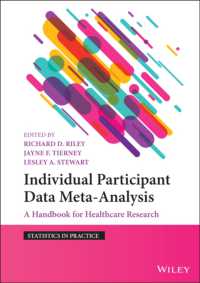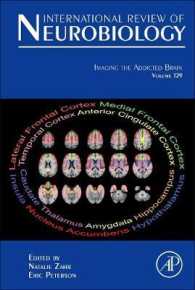Full Description
This book honours the contribution of Marjolijn Verspoor to the development and implementation of dynamic usage-based (DUB) approaches in second language (L2) research and pedagogy. With chapters written by renowned experts in the field, the book addresses the dynamics of language, language learning and language teaching from a usage-based perspective. The book contains both theory and empirical work: the initial theoretical chapters present cutting-edge thinking in relation to both the scope of DUB theory and its applications, providing conceptual perspectives from cognitive grammar and linguistics, thinking-for-speaking (TFS), and Complex Dynamic Systems Theory (CDST) approaches, united by their shared underpinnings of language as a dynamic system of conventionalized routines. The second half of the volume showcases state-of-the-art methodologies to study dynamic trajectories of language learning, empirical investigations into the above-mentioned theoretical concepts, and innovative classroom implementations of DUB language pedagogy.
Contents
Contributors
Prologue Kees de Bot
Introduction
Chapter 1. Teresa Cadierno: Thinking for Speaking in an L2: From Research Findings to Pedagogical Implications
Chapter 2. Akira Murakami: On the Sample Size Required to Identify the Longitudinal L2 Development of Complexity and Accuracy Indices
Chapter 3. Bram Bulté & Alex Housen: A DUB-inspired Case Study of Multidimensional L2 Complexity Development: Competing or Connected Growers?
Chapter 4. Hongying Peng, Sake Jager, Steven Thorne, & Wander Lowie: A Holistic Person-centred Approach to Mobile-Assisted Language Learning
Chapter 5. Søren Eskildsen: Creativity and Routinization in L2 English: Two Usage-Based Case-Studies
Chapter 6. Attila Wind & Luke Harding: Attractor States in the Development of Linguistic Complexity in Second Language Writing and the Role of Self-Regulation: A Longitudinal Case Study
Chapter 7. Peter MacIntyre & Samantha Ayers-Glassey: Competence Appraisals: Dynamic Judgements of Communication Competence in Real Time
Chapter 8. Giulia Sulis, Joanna Davidson, & Marije Michel: Dynamic Changes in Motivation and Willingness to Communicate (WTC) in the Second Language (L2) Classroom: A Multiple Case Study
Chapter 9. Ronald W. Langacker: Nested Locatives: Conceptual Basis and Theoretical Import
Chapter 10. Andrea Tyler, Hana Jan, Nargas Mahpeykar, & Brandon Tullock: Getting Out the Word on Phrasal Verbs: It Turns Out Phrasal Verb Construction (PVC) Meanings are Systematic and Teachable
Chapter 11. Leslie Piggott, Elena Tribushinina, & Rick de Graaff: The Icing on the Cake? Effects of Explicit Form-Focused Instruction After Two Years of Implicit EFL Learning
Chapter 12. Tim Kassenberg, Fabio Galati, Diana de Vries-Zhuravleva, & Iryna Menke-Bazhutkina: Film-Language-Integrated-Learning (FLIL): A Usage-Inspired L2 Teaching Approach
Epilogue Diane Larsen-Freeman
Index








